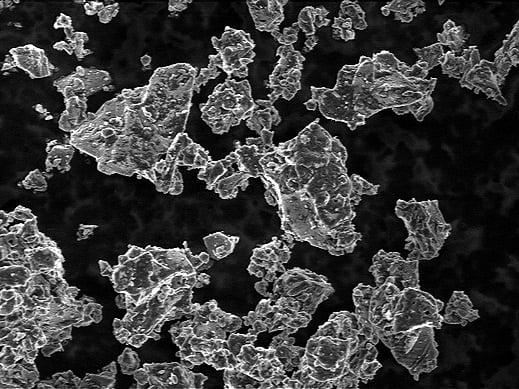Two Advances Point Toward a Cheaper Electric-Car Battery
For the roads to start filling up with electric cars, batteries will need to get much cheaper—as much as 80 percent cheaper by some estimates (see “How Improved Batteries Will Make Electric Vehicles Competitive”). Two recent advances that make an experimental type of battery much more practical could lead to such cost savings.

Researchers have for years been working on a type of battery that uses lithium metal in one electrode and sulfur in the other. In theory, this kind of battery could store three to five times as much energy as a conventional lithium-ion battery (see “Revisiting Lithium-Sulfur Batteries”). But lithium metal is highly reactive when exposed to water and can form root-like structures inside batteries over time; these structures can join positive and negative electrodes, causing short circuits and even fires. So many researchers have begun turning their attention to a similar battery that doesn’t require lithium metal.
In the new type of battery, the sulfur electrode is replaced with a lithium-sulfide material—a compound that contains both lithium and sulfur. This becomes the source of the lithium, so the lithium metal is no longer required and can be replaced with graphite—a material used in lithium-ion batteries today—or with a material such as silicon.
The trouble is, lithium sulfide is electrically insulating, which slows down charging and reduces the amount of energy the battery can deliver. But two recent papers, one from Stanford and the other from Lawrence Berkeley National Laboratory, offer ways to make lithium-sulfide batteries more practical.
These research papers demonstrate low-cost methods for making lithium-sulfide batteries with high-energy storage capacities. The work could lead to commercial batteries that store more than three times as much energy as the lithium-ion batteries currently used in electric vehicles, says Yuegang Zhang, a staff scientist at Lawrence Berkeley National Laboratory.
Earlier this year, Yi Cui, a materials science professor at Stanford, showed a way to overcome the inherent limitations of lithium-sulfide batteries by charging the battery at a higher voltage than usual for its first charge. This changes the chemistry of the electrode, getting around the conductivity problem.
Even then, the lithium sulfide had to be mixed with carbon to improve its conductivity, and the carbon decreases the amount of energy the electrode can store: in experiments, it was enough to reduce the battery’s capacities to levels close to conventional lithium-ion batteries.
Zhang demonstrated a new way to mix the carbon with the lithium sulfide that greatly reduces the amount of carbon needed in the cathode. The percent of the electrode that’s made up of lithium sulfide increases from less than 50 percent to 67.5 percent. This improvement, in part because it’s amplified by improvements it allows in other parts of the battery, could nearly double the overall battery storage capacity, from 350 to 610 watt-hours per kilogram, Zhang estimates. (Lithium-ion batteries in electric vehicles now typically store less than 200 watt-hours per kilogram.)
Obstacles remain to commercializing the technology, including the need to improve the number of times the batteries can be recharged and the speed with which they can be charged. The energy storage numbers should also be taken with a grain of salt—they’re estimates derived from lab-scale experiments, not measurements of large, commercial-scale batteries.
And lithium-sulfur batteries that use lithium metal may yet prove to be the technology of choice. Researchers and companies such as Sion Power and Polyplus are making progress on improving the number of times they can be recharged, and are using ceramics or other materials to address safety issues (see “Beyond Lithium Ion: ARPA-E Places Bets on Novel Energy Storage”).
Keep Reading
Most Popular
Large language models can do jaw-dropping things. But nobody knows exactly why.
And that's a problem. Figuring it out is one of the biggest scientific puzzles of our time and a crucial step towards controlling more powerful future models.
The problem with plug-in hybrids? Their drivers.
Plug-in hybrids are often sold as a transition to EVs, but new data from Europe shows we’re still underestimating the emissions they produce.
Google DeepMind’s new generative model makes Super Mario–like games from scratch
Genie learns how to control games by watching hours and hours of video. It could help train next-gen robots too.
How scientists traced a mysterious covid case back to six toilets
When wastewater surveillance turns into a hunt for a single infected individual, the ethics get tricky.
Stay connected
Get the latest updates from
MIT Technology Review
Discover special offers, top stories, upcoming events, and more.